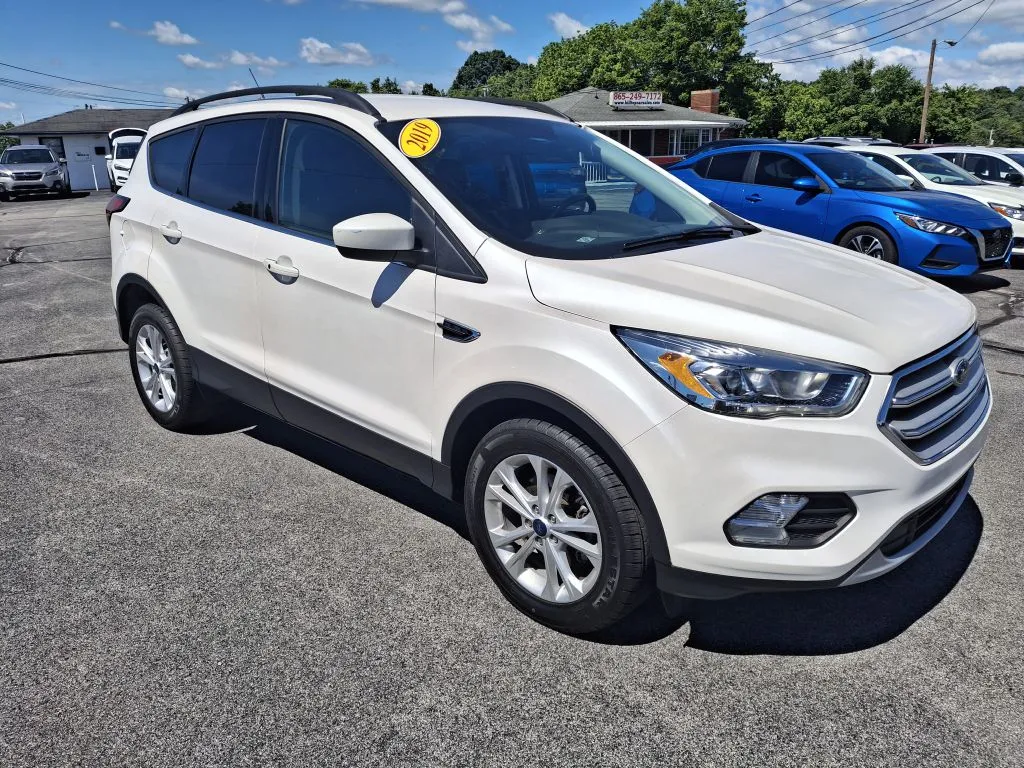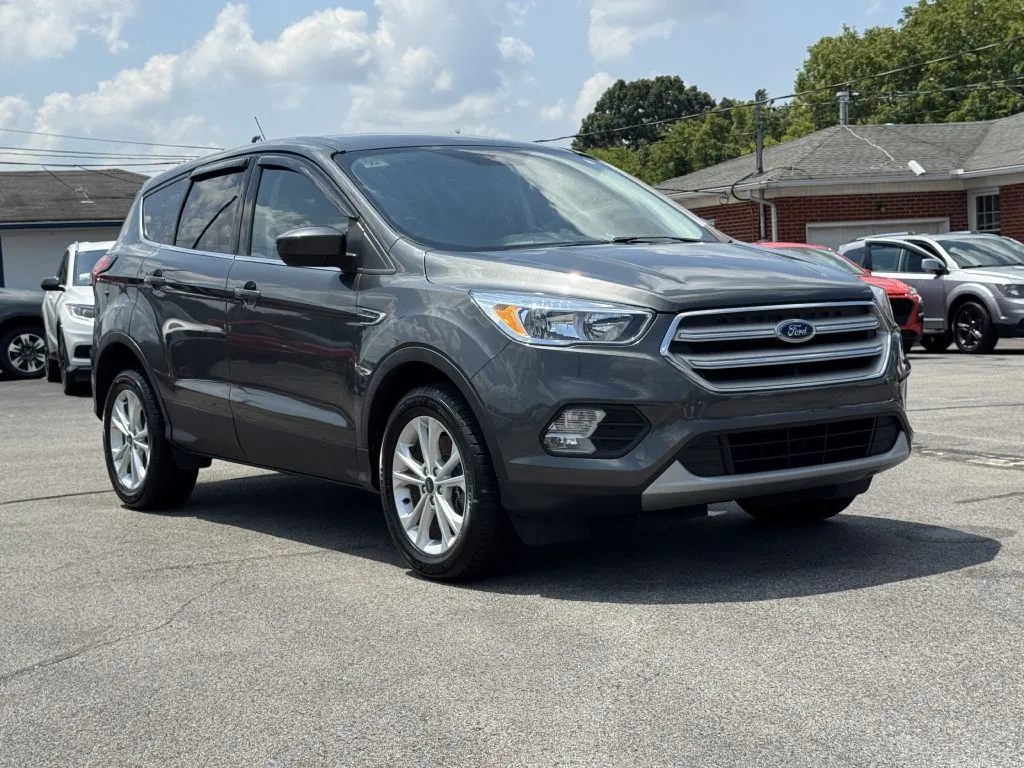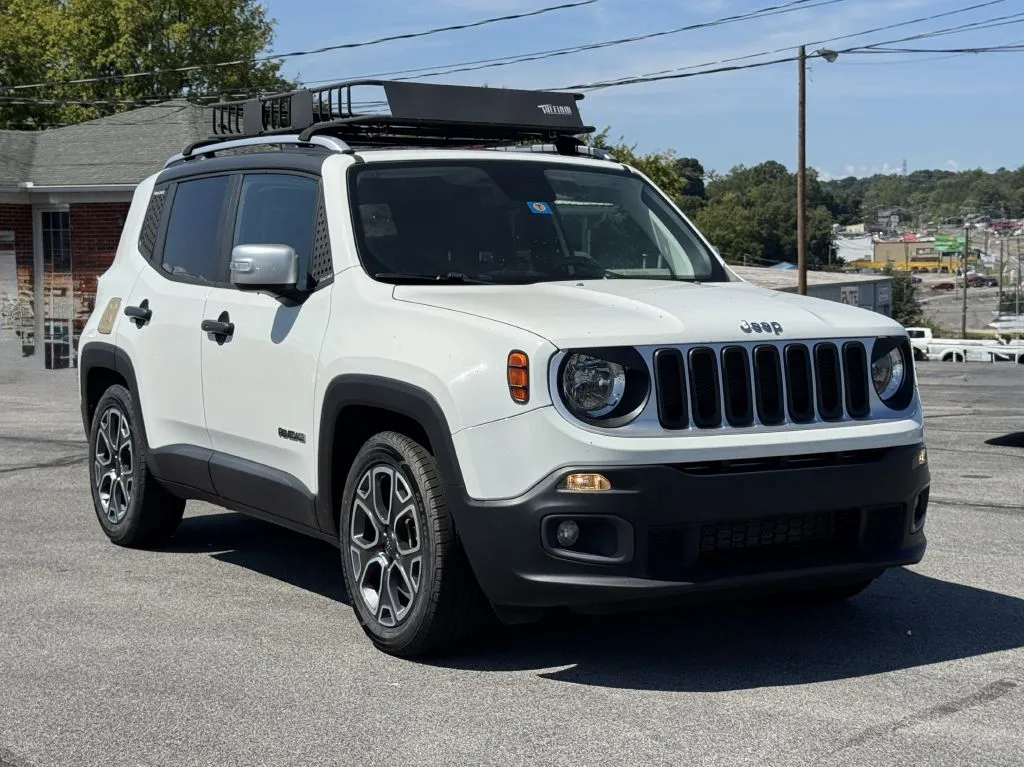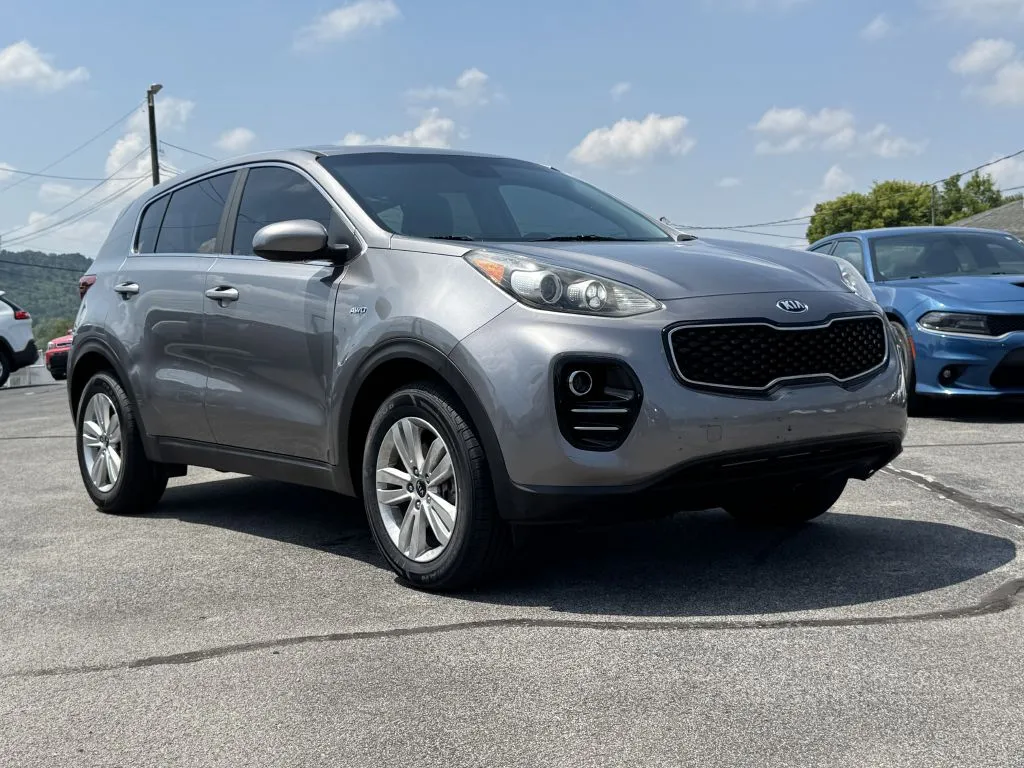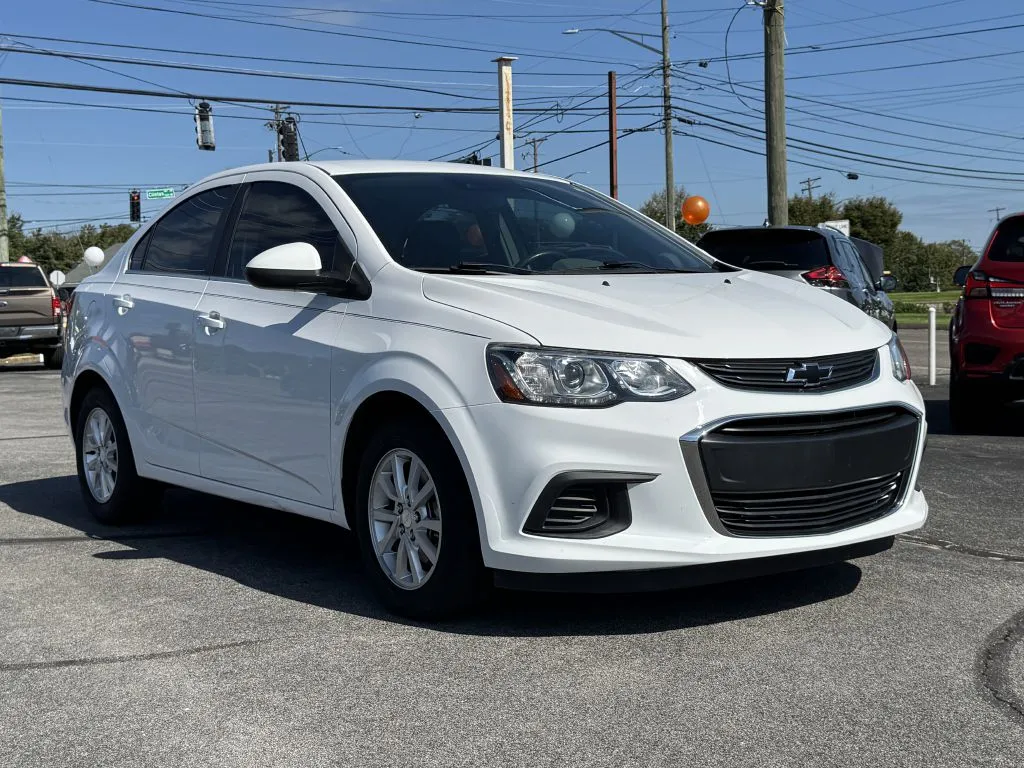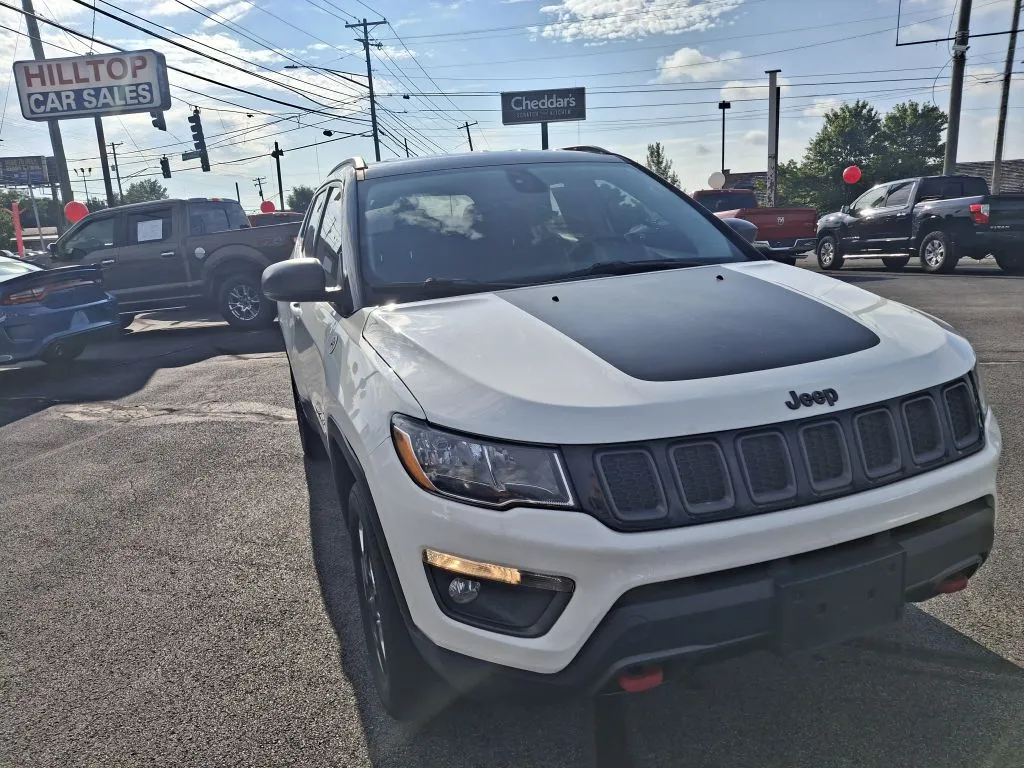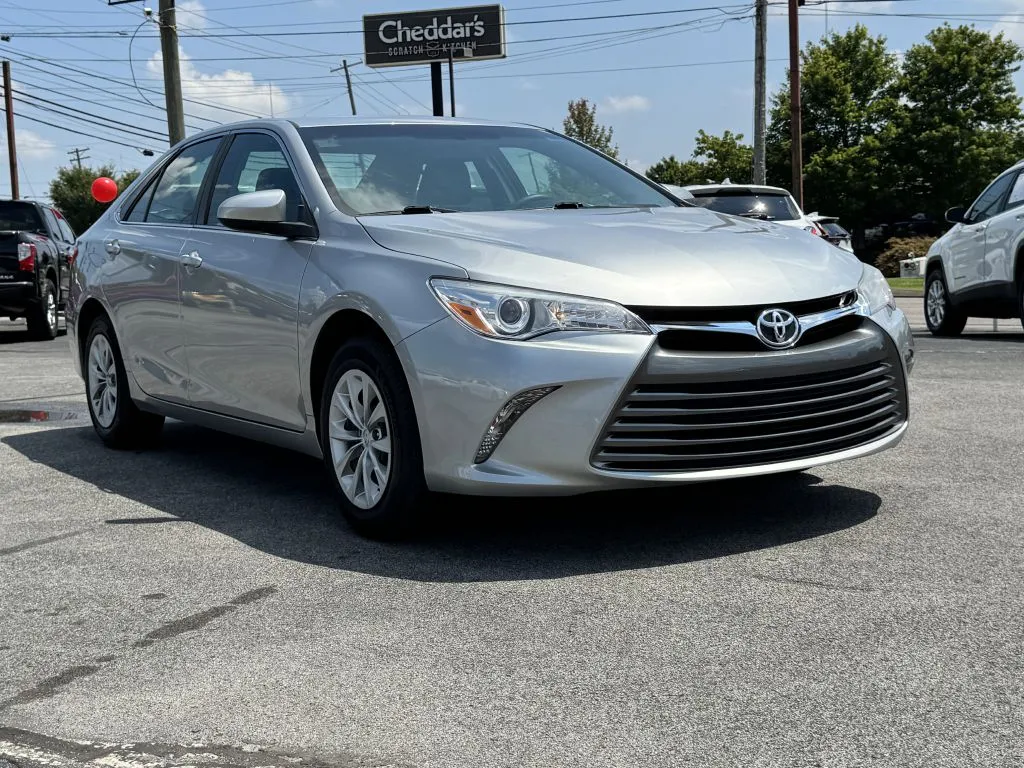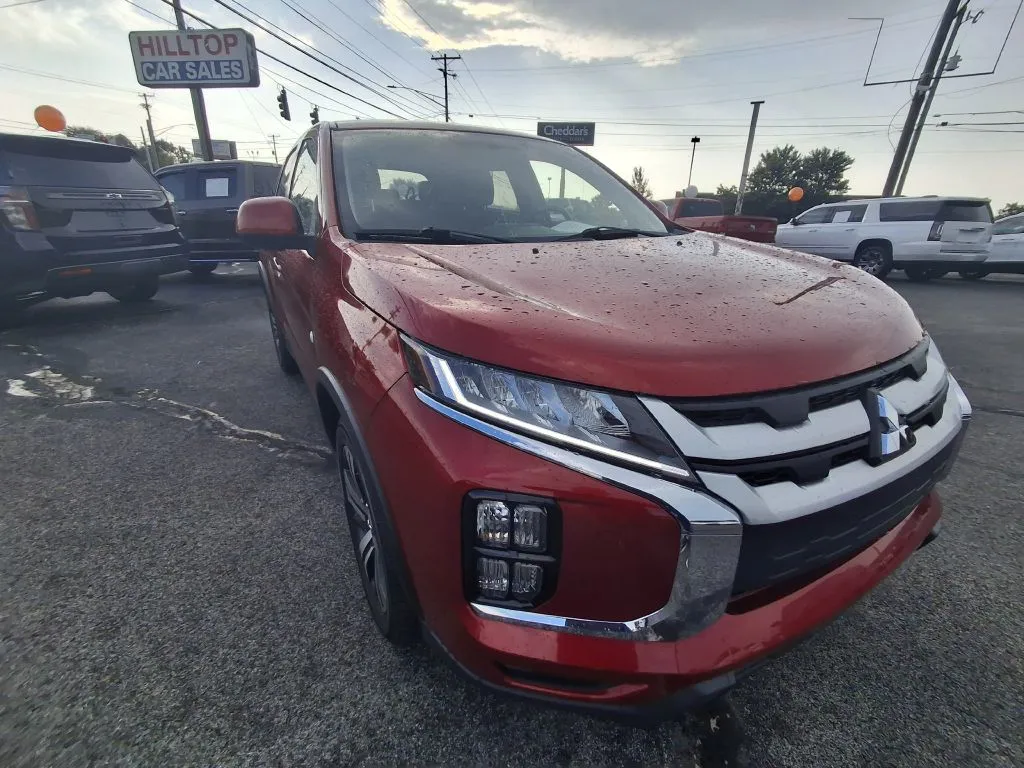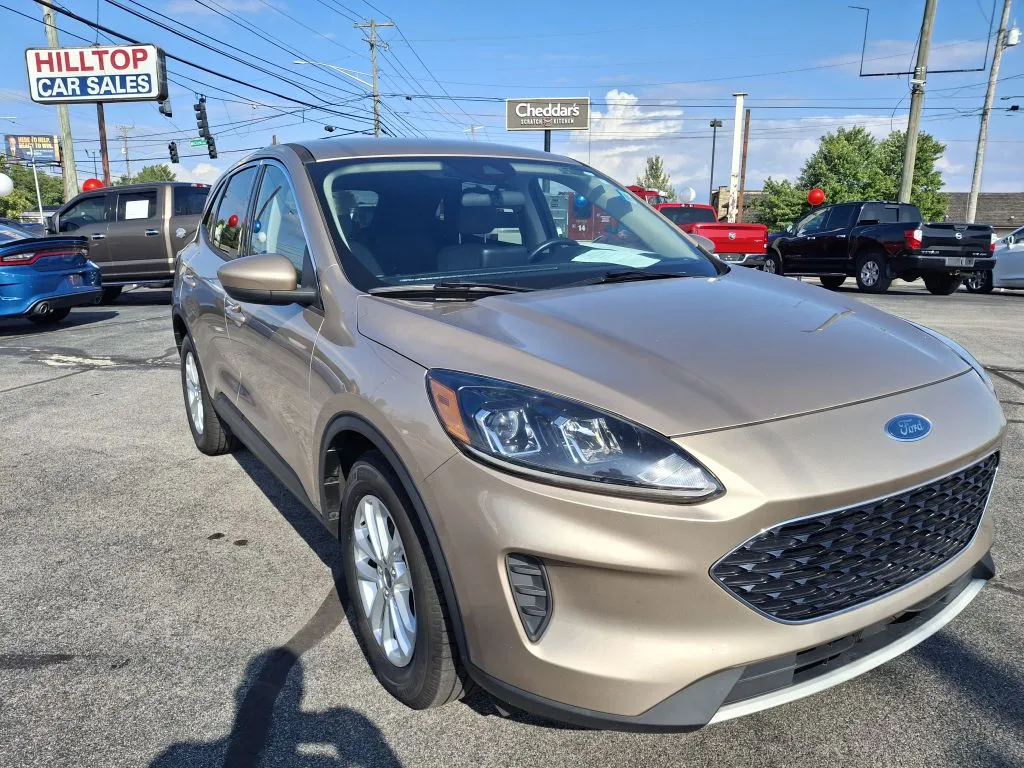Best Used Cars for Families: Top Recommendations & Buying Guide
Table of Contents
Best Used Cars for Families: Top Recommendations & Buying Guide
Finding the right used car for your family can feel overwhelming. There are so many options out there, it’s hard to know where to start.
The best used family cars combine safety, reliability, and affordability. You’ll want enough space for passengers and cargo, too.
Popular choices include sedans like the Honda Accord and Toyota Camry. SUVs such as the Honda Pilot and Toyota Highlander, and minivans like the Honda Odyssey, are also strong contenders.
Smart families focus on a few key factors when shopping for used vehicles. Safety ratings, maintenance costs, and available space really matter when you’re picking a car that needs to last.
The used car market can offer excellent value. You just have to be willing to research different types and brands.
This guide breaks down the top used family vehicles across different categories and budgets. From compact sedans to spacious SUVs and practical minivans, there’s something out there for every family.
We’ll also touch on financing options, maintenance tips, and what to look for when buying from dealers.
Key Takeaways
- Safety ratings, reliability, and maintenance costs matter most when picking a used family car
- Sedans, SUVs, crossovers, and minivans each have unique pros depending on your family’s size and needs
- Certified pre-owned programs and smart financing can help families get better value and peace of mind.
Key Considerations When Buying Used Cars for Families
Picking the right used car for your family means looking at safety ratings, long-term reliability, interior space, and total ownership costs. These factors work together to decide which car will fit your daily life and budget best.
Safety Features to Prioritize
Modern safety tech can help prevent accidents and protect everyone inside. Look for used cars with high crash test ratings from the National Highway Traffic Safety Administration (NHTSA) and Insurance Institute for Highway Safety (IIHS).
Essential safety features include multiple airbags, electronic stability control, and anti-lock brakes. Most cars made after 2012 have these basics.
Advanced safety systems like automatic emergency braking, lane departure warnings, and blind spot monitoring started showing up around 2015-2016. These features can help avoid accidents before they happen.
Child safety is huge. Make sure the car has LATCH (Lower Anchors and Tethers for Children) systems for car seats. Rear door and window locks keep curious kids safe.
A used car with strong safety ratings might cost more upfront, but it’s worth it for peace of mind. Always check the car’s safety recall history and make sure any recalls have been fixed.
Reliability and Maintenance Costs
A reliable used car saves you money and headaches over time. Some brands just last longer than others.
Toyota and Honda vehicles usually top the charts for reliability. Models like the Camry, Corolla, Accord, and Civic can run well past 200,000 miles if you keep up with maintenance.
Maintenance costs can vary a lot between brands and models. Luxury cars often need pricier parts and special service. It’s smart to research common problems for the year and model you’re considering.
Think about age and mileage, too. A five-year-old car with 60,000 miles usually needs less work than a ten-year-old car with 120,000 miles.
Warranty options give extra protection. Some used cars still have part of the original manufacturer’s warranty. Certified pre-owned cars come with more coverage, but they’ll cost a bit more.
Get a trusted mechanic to do a pre-purchase inspection. Spending $150-200 now can save you from nasty surprises later.
Space and Comfort Needs
Family size and lifestyle shape your space needs. Think about now and a few years down the road.
Passenger capacity is key. If you’ve got three or more kids, you’ll probably want a vehicle with seven or eight seats. SUVs like the Honda Pilot or Toyota Highlander offer that flexibility.
Cargo space depends on your activities. Minivans have the most room, while compact cars work for smaller families without much gear.
Seating comfort matters, especially on long trips. Try every seat during the test drive. Make sure car seats fit and install easily.
Storage solutions help keep things tidy. Look for cup holders, door pockets, and console storage. Some cars offer underfloor storage or seat-back organizers.
Accessibility features like wide doors and low step-in heights make life easier, especially with little kids or older family members.
Fuel Efficiency and Ownership Costs
Total ownership costs include fuel, insurance, maintenance, and depreciation. These add up fast over a few years.
Fuel economy hits your wallet every month. Compact cars usually get 30+ mpg, while big SUVs might only manage 20 mpg. Used hybrids save gas but cost more at first.
Insurance costs change based on vehicle type and safety ratings. Sports cars and luxury models cost more to insure than family sedans. It’s smart to get insurance quotes before you buy.
Depreciation affects what your car’s worth later. Reliable brands usually hold their value better. Popular models with good reputations lose value more slowly.
Registration and taxes depend on where you live and your car’s value. Some states base yearly taxes on the car’s worth.
If you’re not paying cash, consider financing costs. Used car loans often have higher interest rates than new car loans. Shop around for the best rates from banks and credit unions.
Top-Rated Family-Friendly Used Cars
Some car makers just get family vehicles right. Toyota and Honda lead the pack for reliability, while Ford and other American brands offer solid value.
These brands have a track record for safety, space, and long-term dependability.
Toyota Models for Families
The Toyota Camry stands out for families who want a reliable sedan. It seats five, sips fuel, and doesn’t cost a fortune to keep running. There’s plenty of space for car seats in the back.
The 2013 Toyota Highlander gives you three rows for seven passengers. The second row can switch from three-across to two-across, making it easier to get into the third row.
All-wheel drive is available on the Highlander, which helps in bad weather. The hybrid version gets 28 mpg combined and keeps all-wheel drive.
The 2015 Toyota Sienna is the only minivan with available all-wheel drive. Higher trims come with leather captain’s chairs and a premium JBL sound system.
The 2016 Toyota Prius V is a smart pick for families who care about gas mileage. This wagon-style hybrid gets 42 mpg combined and has flexible cargo space. You don’t have to give up practicality for efficiency.
Honda Family Car Options
The 2016 Honda Odyssey is a minivan loaded with clever features. Higher trims have a built-in HondaVAC vacuum for quick cleanups. The Touring Elite trim adds a huge rear entertainment screen and leather seats.
Honda’s reliability makes their cars a safe bet for the long haul. The Odyssey’s features are designed for real family life—spills, snacks, and all.
The 2016 Honda Pilot was totally redesigned that year. This three-row SUV looks sharp and offers a roomy, flexible interior.
Trim levels range from the basic LX to the well-equipped EX. There’s something for every budget. The Pilot’s durability makes it a favorite for families.
Best Ford Family Choices
Ford keeps things practical and budget-friendly. You usually get more features for your money compared to imports.
The Ford Explorer has three-row seating and solid towing power. Used models offer good value, with available all-wheel drive and modern safety features. Its size suits bigger families or those with lots of gear.
Ford’s truck-based SUVs like the Expedition rival the Chevy Suburban for space and towing. These are great if you need to haul a lot or tow campers and boats.
Recent Ford models have become more reliable. The brand’s focus on tech and connectivity appeals to families who want to stay plugged in.
Noteworthy American Cars
The 2014 Chevrolet Suburban is huge—seats up to nine and tows up to 8,100 pounds. There’s a massive 137.4 cubic feet of cargo space behind the front seats.
American brands often give the best value for big families. They usually cost less than imports but still deliver plenty of space and features.
The 2018 Chrysler Pacifica brings luxury touches to minivans. It has Stow ‘n Go seats that fold flat into the floor and modern smartphone tech.
Kia’s 10-year warranty makes the 2019 Sedona a smart pick for families on a budget. Kia offers solid value and great coverage.
Best Used Sedans for Family Use
Sedans give families a nice mix of comfort, fuel efficiency, and safety features at a good price. These four-doors make getting in and out easier than SUVs and save money on gas for daily driving.
Benefits of Choosing a Sedan
Sedans are champs at fuel economy. Most family sedans get 25-35 mpg combined.
Lower ride height means kids and older passengers can get in and out without a struggle. Parents don’t have to lift toddlers as high as they would with an SUV.
Safety features like multiple airbags, stability control, and high crash test ratings are common. Many used sedans from 2018 and up have automatic emergency braking and blind spot monitoring.
Maintenance costs are usually lower for sedans. Parts are cheaper and repairs are often simpler.
Sedans ride smoothly and handle well on highways. You’ll notice less road noise compared to bigger vehicles.
Popular Sedan Models
Toyota Camry is a go-to choice for reliability. The 2017-2020 models have roomy back seats and big trunks.
Honda Accord gives you similar dependability with even more interior space. The 2018 redesign added extra rear legroom and cargo room.
Nissan Altima is a solid value in the used market. Starting in 2019, you can get all-wheel drive.
Hyundai Sonata and Kia Optima come with strong warranties that often transfer to new owners. They pack in standard features at a lower price.
Subaru Legacy always comes with all-wheel drive, making it great for snowy places. It gets high marks for safety.
Comparing Sedans with SUVs
Sedans cost less to buy and run than most SUVs. Used sedans are usually $2,000-$5,000 cheaper than similar SUVs from the same year.
Cargo space is where SUVs win—they have more vertical room for big stuff. Sedans have trunks that work fine for most family gear.
Passenger capacity favors SUVs if you have a big crew. Most sedans fit five, while three-row SUVs can seat seven or eight.
Fuel costs are lower with sedans. On average, a family sedan uses 20-30% less gas than a similar SUV.
Driving dynamics are easier with sedans. They’re simpler to park and maneuver, and the lower center of gravity means less risk of rolling over.
Spacious SUVs and Crossovers for Larger Families
If you need more space and seats, midsize and large SUVs are the way to go. Three rows, big cargo areas, and advanced safety features are the main draws. All-wheel drive helps in bad weather and on rough roads.
Best Used Midsize SUVs
The Toyota Highlander is a reliable pick for growing families. Models from 2017-2019 hold their value and have Toyota’s reputation for dependability. The Highlander seats up to eight and offers 84 cubic feet of cargo space.
Honda Pilot models from 2016-2020 are strong performers with family-friendly features. The Pilot seats eight comfortably and comes standard with Honda Sensing safety tech. Maximum cargo space is 109 cubic feet—plenty for big loads.
The Mazda CX-9 mixes sportiness with practicality for families of four to six. Models from 2017-2023 have upscale interiors and are fun to drive. It seats seven, but the third row is best for kids.
Chevrolet Traverse stands out for space among midsize SUVs. Used models from 2018-2022 offer three rows of adult-friendly seating and up to 98 cubic feet of cargo room. The Traverse rides smoothly and has easy-to-use tech.
Recommended Large SUVs
Ford Expedition models from 2018-2022 give families tons of interior space and strong towing power. These full-size SUVs seat up to eight people and offer 104 cubic feet of cargo space.
The Expedition handles road trips without breaking a sweat. It's a favorite for big families.
The Chevrolet Tahoe is still a top pick if you need maximum room. Used models from 2015-2020 have lots of legroom in all three rows and plenty of cargo space.
The Tahoe’s V8 engine brings strong performance, and the build quality feels solid. It’s a workhorse that doesn’t mind being pushed.
Toyota Sequoia brings reliability to the full-size SUV game. Models from 2016-2022 are known for their tough construction and good resale value.
The Sequoia seats eight and has enough cargo space for family adventures. It’s not flashy, but it gets the job done.
GM’s Chevrolet Suburban is the king of hauling. Used Suburbans have the most cargo space in the class and seat up to nine.
The Suburban fits huge families or anyone who likes to bring everything along. It’s basically a house on wheels.
All-Wheel Drive and 4WD Options
Most midsize SUVs come with all-wheel drive (AWD) as standard or optional. Toyota Highlander and Honda Pilot use AWD systems that kick in automatically when things get slippery.
These systems help with traction in rain, snow, and light off-roading. It’s peace of mind, especially in bad weather.
Four-wheel drive (4WD) shows up on bigger SUVs like the Ford Expedition and Chevy Tahoe. These let you switch between 2WD and 4WD modes.
4WD handles towing and off-road trails better than AWD. It’s a must if you’re planning adventures off the beaten path.
Fuel economy usually drops by 1-2 mpg with AWD or 4WD. Maintenance costs can go up too.
But for families in snowy or rough-weather areas, the extra safety and ability are often worth it. Sometimes you just need that extra grip.
When shopping used, look for models with reliable drivetrains. Toyota and Honda AWD systems usually need less maintenance.
Check the service records to make sure the previous owner took care of things. These systems can get pricey to fix if ignored.
Minivans and MPVs: Practical Picks for Families
Minivans really nail space and family features, often at lower prices than three-row SUVs. The Honda Odyssey, Toyota Sienna, and Chrysler Pacifica are the big three, known for reliability, safety, and up to 150 cubic feet of cargo room.
Top Used Minivan Models
The Honda Odyssey is kind of the gold standard for used minivans. Models from 2018-2023 have a 3.5-liter V6 with 280 horsepower and get up to 28 mpg on the highway.
Used Odysseys from 2018-2021 usually cost $22,000 to $35,000. Honda Sensing safety features come standard.
The Toyota Sienna got a full redesign in 2021, now with standard AWD and hybrid power. The hybrid pairs a 2.5-liter engine with electric motors for 243 horsepower and 36 mpg combined.
Used 2021-2023 Siennas run $28,000 to $40,000. AWD is a big plus in tough weather.
The Chrysler Pacifica packs a ton of tech. Its 3.6-liter V6 makes 287 horsepower and gets 28 mpg highway.
Used Pacificas from 2017-2021 go for $18,000 to $32,000. There’s also a plug-in hybrid that gets up to 32 miles on electric power alone.
Family Features in Minivans
Minivans are all about making space work for you. With seats out, you can get up to 150 cubic feet of cargo room.
Sliding doors and low step-in heights make loading up kids and gear way easier than with most SUVs.
Key Family Features:
- Removable second and third-row seats let you set up the interior how you like
- Floor-level cargo loading, so no heavy lifting over a bumper
- Tons of storage spots all around the cabin
- LATCH anchors in every seat for car seats
Power sliding doors come with sensors that stop if something gets in the way. Some models even have built-in vacuums and rear entertainment screens.
Multi-zone climate control lets everyone pick their own temp. There are usually plenty of USB ports and outlets for everyone’s devices.
Evaluating Minivan Reliability
Modern minivans score high on crash tests and often get IIHS Top Safety Pick awards. Automatic emergency braking, blind spot monitoring, and adaptive cruise control are standard on most.
Reliability Factors:
- Honda Odyssey: Known for lasting a long time and holding value
- Toyota Sienna: Hybrid tech is proven, and warranties are solid
- Chrysler Pacifica: Loads of features, but might need specialized service
Minivans often cost less to maintain than three-row SUVs. Parts are easy to find, which keeps repair bills down.
Extra features like power sliding doors and built-in vacuums can add some maintenance headaches, though. It’s worth thinking about for long-term ownership.
Premium and Luxury Used Family Cars
Luxury cars give families a taste of the good life—premium features, advanced safety, and comfort—at lower prices when you buy used. BMW leads with reliable, family-friendly models, but there are more affordable luxury options out there too.
Best BMW Models for Families
The BMW X3 is a top pick for families wanting a luxury SUV. It’s got all-wheel drive, seats five, and has a big cargo area.
2019-2021 models are especially good buys with up-to-date safety features. The X3 feels modern without being over the top.
The BMW 3 Series sedan brings luxury in a smaller package. It’s got quality materials, sharp handling, and good gas mileage.
2020-2022 models come with standard safety tech like automatic emergency braking. The 3 Series is fun, but still practical for a family.
Key BMW Family Features:
- iDrive infotainment with smartphone integration
- Active protection systems for safety
- Flexible seating in SUVs
- All-wheel drive on most models
The BMW X5 is the go-to for bigger families. It seats up to seven and has plenty of cargo space.
2019-2021 X5s manage to mix luxury and everyday usefulness. It’s a bit pricier, but worth a look.
Entry-Level Luxury Options
The Acura TLX gives you luxury touches at a more reasonable price. 2018-2020 models come with leather, premium audio, and advanced safety for less than the German brands.
Lexus ES sedans are super reliable and comfortable. 2019-2021 models even have hybrid versions for better fuel economy.
These cars ride smoothly and have roomy interiors. They’re easy to live with.
Affordable Luxury Picks:
- Acura MDX – Three rows, holds value well
- Infiniti QX60 – Family-friendly, lower maintenance
- Volvo XC60 – Great safety scores and comfy seating
Genesis G90 sedans are loaded with features and still reasonably priced. Used 2019-2021 models come with heated seats, premium sound, and strong warranties.
Value Retention in Used Luxury Cars
BMWs usually keep 45-55% of their value after three years. The X3 and 3 Series hold up better than the bigger X7.
Lexus vehicles do even better, with the ES and RX keeping 55-60% of their value after three years. You might pay more upfront, but you lose less over time.
What Affects Luxury Car Values:
- Maintenance records can make or break your resale price
- Mileage matters more than age for luxury cars
- Popular colors like white, black, and silver hold value best
- Tech features get outdated quickly
Mercedes-Benz and Audi drop in value faster than BMW or Lexus. German luxury cars can get expensive to maintain, so budgeting for repairs or an extended warranty is smart.
Maintaining Your Used Family Car for Longevity
Regular maintenance keeps family cars running smoothly and saves you money down the road. Taking care of little issues early stops them from becoming big, expensive problems.
Regular Maintenance Checklist
Family car owners should stick to a basic maintenance schedule for reliability. The manufacturer’s recommended timeline is a good starting point.
Check monthly:
- Tire pressure and tread
- Oil, coolant, and brake fluid levels
- Battery terminals for corrosion
- All lights and signals
Every 3,000-7,000 miles:
- Change oil and filter
- Inspect belts and hoses
- Check air filter
- Test brakes
Every 15,000-30,000 miles:
- Replace transmission fluid
- Change spark plugs
- Flush coolant system
- Inspect timing belt
Set calendar reminders so you don’t forget. Lots of auto parts stores will check your battery and fluids for free, which helps if you’re on a budget.
Importance of Oil Changes
Oil changes are the most important maintenance job for family cars. Fresh oil keeps engine parts moving smoothly and prevents expensive damage.
Most cars need oil changes every 5,000-7,000 miles with regular oil. Synthetic oil lasts 7,500-10,000 miles, but costs more.
Oil change signs:
- Oil is dark and thick on the dipstick
- Engine sounds louder at startup
- Oil change light comes on
- Gas mileage drops
If your car has a lot of miles, consider high-mileage oil. These oils help prevent leaks and cut down on oil burning in older engines.
Oil changes usually cost $30-80, but skipping them can lead to repairs over $3,000. Don’t risk it—set reminders and stick to the schedule.
Finding Affordable Replacement Parts
You can save a lot on maintenance by shopping smart for parts. Knowing your options helps you get good deals without cutting corners on safety.
OEM parts are made by the original manufacturer. They fit perfectly and are super reliable, but they cost more.
Aftermarket parts from brands like Bosch, Denso, and AC Delco offer similar quality for less money.
Money-saving tips:
- Shop online at places like RockAuto or AutoZone
- Buy in bulk during sales
- Join loyalty programs at parts stores
- Compare prices before you buy
Don’t go too cheap on safety parts like brakes, tires, or steering. Quality really matters there.
Local salvage yards are great for non-safety stuff, like interior trim or body panels. Many yards even give you a warranty on used parts.
Evaluating American Brands: Ford, GM, Chrysler, and Dodge
American brands bring families strong choices in trucks, SUVs, and some sedans. Ford leads in truck sales, while GM covers a ton of ground with Chevrolet, GMC, and Cadillac. Chrysler and Dodge focus more on minivans and performance family cars.
Strengths of Ford Models
Ford’s F-150 pickup truck has been America’s best-seller for decades. It’s got great towing power and crew cabs that work for families.
The Ford Explorer gives you three rows and decent reliability. The tech is easy to use, and there’s enough cargo room for trips.
Ford’s Escape compact SUV is good on gas and scores well for safety. It’s roomy enough for smaller families and easy to park.
Why families like Ford:
- Strong resale value
- Service shops everywhere
- Trucks and SUVs that last
- Used models are priced well
Ford cars are usually cheaper to maintain than luxury brands. Parts are easy to find.
GM Family Vehicle Highlights
GM’s family lineup includes Chevrolet, GMC, and Cadillac. The Chevrolet Traverse is one of the roomiest three-row SUVs out there.
The GMC Acadia has a premium feel and is built tough. Both are made in Michigan and seat up to eight.
Chevrolet Equinox is a compact SUV with good gas mileage and safety scores. It’s a solid pick for families on a budget.
Top GM family vehicles:
- Chevrolet Traverse (three rows)
- GMC Acadia (midsize, premium)
- Chevrolet Equinox (compact)
- Chevrolet Tahoe (full-size)
GM often includes advanced safety tech as standard. OnStar adds emergency help and connectivity.
Chrysler and Dodge in the Family Car Market
Chrysler Pacifica is the only minivan with Stow ‘n Go seats that fold flat into the floor. Switching between passengers and cargo is super easy.
You can get the Pacifica as a hybrid, too, with up to 32 miles of electric-only driving. That’s handy for errands around town.
Dodge leans sporty, but the Durango offers three rows and available V8 power for towing. It’s a rare mix of family and muscle.
Chrysler and Dodge highlights:
- Pacifica: Most flexible minivan seating
- Durango: Sporty three-row SUV
- Good prices for used models
- Strong warranty options
These brands often give you more features for your money. Reliability depends on the year and model, so check reviews before you buy.
Certified Pre-Owned and Dealer Programs
Certified pre-owned programs give families more confidence and warranty protection when buying used cars. They include inspection guarantees, longer warranties, and extra perks that most regular used car deals just don’t have.
Benefits of Certified Used Cars
Certified pre-owned vehicles get a multi-point inspection before they hit the lot. Most programs check anywhere from 161 to 230 different things to make sure the car is safe and reliable.
Warranty Coverage gives families real peace of mind. For example, Lexus offers up to six years of bumper-to-bumper coverage with no mileage limits.
Honda’s program covers the powertrain for seven years or 100,000 miles. That’s pretty solid if you’re worried about big repair bills.
Extra Benefits can include:
- 24-hour roadside help
- Travel interruption coverage ($300-$925)
- Free maintenance for a while
- Loaner cars when yours is in the shop
A lot of these warranties actually transfer if you sell the car. That helps keep resale value up and makes your car more appealing when it’s time to move on.
When a manufacturer backs the car, it really means something. Lexus, for example, usually has only 135 problems per 100 vehicles, which is way less than the industry average.
Inspection and Warranty Considerations
Manufacturers set their own rules for which cars qualify. Most only allow cars up to five or six years old.
Mileage limits usually range from 60,000 to 80,000 miles. Go over that, and the car’s out.
Inspection Standards vary by brand:
- Mini: 230-point inspection
- Honda: 182-point inspection
- Kia: 165-point inspection
- Lexus: 161-point inspection
Don’t get too hung up on the number, though. It’s more about how carefully they check each thing than just the total count.
Warranty Terms can be really different. Kia goes up to 10 years or 100,000 miles for the powertrain.
Acura, on the other hand, gives six years total from when the car was first bought.
Premium programs usually drop any repair deductibles. Most manufacturers don’t charge you out-of-pocket for covered warranty repairs.
If you sell your CPO car, transfer fees are usually pretty low—$0 to $40. That’s nothing compared to the value the warranty adds.
Where to Buy: Dealerships vs. Private Sellers
Franchise Dealerships are the main place for certified pre-owned vehicles. Only authorized dealers can offer manufacturer CPO programs and warranties.
Brand-specific dealers usually have the best programs. They get direct support and training from the manufacturer.
Multi-Brand Dealers might have a few CPO cars, but they mostly stick to their main brands.
Private Sellers can’t sell manufacturer-certified cars. They might offer their own inspections or warranties, but those don’t have the same coverage or backing.
Independent Dealers sometimes do their own “certified” programs. Usually, those aren’t as good as what you get from the manufacturer.
Honestly, it’s best to stick with franchise dealerships for CPO cars. The extra warranty and peace of mind are worth the extra money.
Financing and Budgeting Tips for Family Used Cars
Smart planning can mean the difference between finding a great family car and overspending. It helps to set a realistic budget, get good loan terms, and understand how much value cars lose over time.
Setting a Family Car Budget
Figure out your total monthly car costs before you even start looking. That means the payment, insurance, gas, maintenance, and repairs.
Monthly Budget Formula:
- Car payment: 10-15% of your take-home pay
- Insurance: $100-300 a month
- Gas: $150-250 a month
- Maintenance: $50-100 a month
So, if your family brings home $5,000 a month, try to keep your car payment between $500 and $750. That way, you’ve got room for everything else.
Don’t forget the total purchase cost. Add taxes, registration, and any repairs you need right away.
A $15,000 car usually ends up costing $16,500-$17,000 after everything’s included.
Used cars sometimes need repairs you don’t expect. It’s smart to set aside $1,000-$2,000 for surprise fixes in the first year.
Honda Accords and Toyota Camrys usually need fewer repairs than luxury brands, which is good news if you want fewer headaches.
Comparing Used Car Loans
Loan rates and terms can change a lot depending on where you go. Banks, credit unions, and online lenders all have their own pros and cons.
Loan Options by Source:
- Credit unions: 3-6% APR, for members only
- Banks: 4-8% APR, better rates for existing customers
- Online lenders: 5-12% APR, fast approval
- Dealer financing: 6-15% APR, easy but often pricier
Your credit score really matters here. If you’re above 700, you’ll get the best deals. Scores between 600-699 usually mean you’ll pay 2-4% more.
Shorter loans cost less in the long run, but the monthly payments are higher. For example, a $20,000 loan at 5% APR is $377 a month for 60 months, but only $283 for 84 months.
Try to get pre-approved before you shop. That tells dealers you’re serious and helps you avoid overpaying.
It’s smart to compare at least three lenders before you decide.
Understanding Depreciation Rates
Cars lose value fast—some more than others. This affects what you pay now and what you’ll get back later.
Depreciation by Car Age:
- Year 1: 20-25% drop in value
- Year 3: 40-50% drop
- Year 5: 55-65% drop
- Year 10: 70-80% drop
Toyota and Honda cars usually hold their value better than most. A 5-year-old Toyota Camry might still be worth 45% of its original price, while a Chrysler sedan could only keep about 35%.
Mileage matters, too. Cars driven 12,000-15,000 miles per year are about average.
Cars with more miles cost less but may need more repairs. It’s a trade-off.
Best Value Sweet Spots:
- 3-5 years old with 36,000-60,000 miles
- Most depreciation already happened
- Still have modern safety features
- Might even have some warranty left
If you buy in this range, you usually get the best mix of features, reliability, and value for your money.
Frequently Asked Questions
Picking a used family car isn’t easy. You need to think about models, prices, and safety features.
Here are some common questions that come up about reliability, budget, and which years to buy.
What are the top reliable used family vehicle models?
The Toyota Camry is one of the best bets for a reliable family sedan. It’s great on gas and rarely lets people down.
The Honda Accord is another strong choice. Both cars have roomy cabins and don’t cost much to maintain.
If you want an SUV, the Toyota RAV4 is known for being reliable. The Mazda CX-5 is also dependable and fun to drive.
Need a minivan? The Toyota Sienna is usually the go-to for families. It’s spacious and lasts a long time.
Which used SUVs are recommended for family use?
The 2018 Mazda CX-5 is a great value under $15,000. It rides smoothly, keeps the cabin quiet, and comes with standard safety features like blind spot warning.
The 2021 Kia Sportage handles well and has a roomy interior. Newer models add automatic emergency braking and lane keeping assist.
For three rows, check out the 2018 Mazda CX-9. It drives well and has forward collision warning and automatic emergency braking.
The 2018 Toyota RAV4 Hybrid mixes reliability with awesome gas mileage. It gets 8 mpg more than the regular version.
How can I find the best used cars under $10,000 for a family?
The 2016 Mazda6 is a smart pick in this price range. It gets about 32 mpg and has a smooth four-cylinder engine.
Try to find cars from the last couple years of their model generation. They usually have fewer problems and more features.
Make sure any car you’re looking at has electronic stability control. That’s a must-have for safety.
Always check reliability ratings before you buy. Sometimes, cars that were just average when new become real bargains as used models because of depreciation.
What safety features should I look for in a used family car?
Electronic stability control is non-negotiable for a family car. It helps keep you safe during sudden moves or bad weather.
Automatic emergency braking can prevent crashes or at least make them less severe. Look for this if you’re shopping for cars from 2017 or newer.
Blind spot monitoring is a big help on the highway. It started becoming standard on many cars in 2018.
Forward collision warning lets you know if you’re about to hit something. By 2017, a lot of brands made this standard.
Lane departure warning and lane keeping assist help you stay in your lane. They’re especially nice for long trips.
Can you recommend family-friendly used cars within a $5,000 budget?
Finding a reliable family car under $5,000 isn’t easy, but it’s possible. Focus on older models that have a reputation for lasting a long time.
Look for high-mileage Toyota Camry or Honda Accord models. Even with more miles, they often keep running reliably.
For smaller families, older Toyota Corollas are a good bet. They’re good on gas and are known for dependability.
Always get a trusted mechanic to check out any car before you buy. That’s even more important when you’re shopping on a tight budget.
Just remember, cheaper cars usually need more repairs. Make sure to budget for those extra costs.
What year models should I consider when looking for the best used family cars?
The 2019 Toyota Corolla is a great pick under $15,000. It comes with standard safety features and has a roomy back seat for adults.
If you're thinking about hybrids, check out the 2019 Toyota Camry Hybrid. It gets an impressive 52 mpg and packs in a lot of safety gear.
The 2018 model year stands out for value and features. Many brands started making safety features standard that year.
Try to look for the last few years of a car's generation. Automakers usually sort out most of the early bugs by then.
It's smart to skip the very first year of a new generation. Those cars can have more issues than the later, polished versions.




